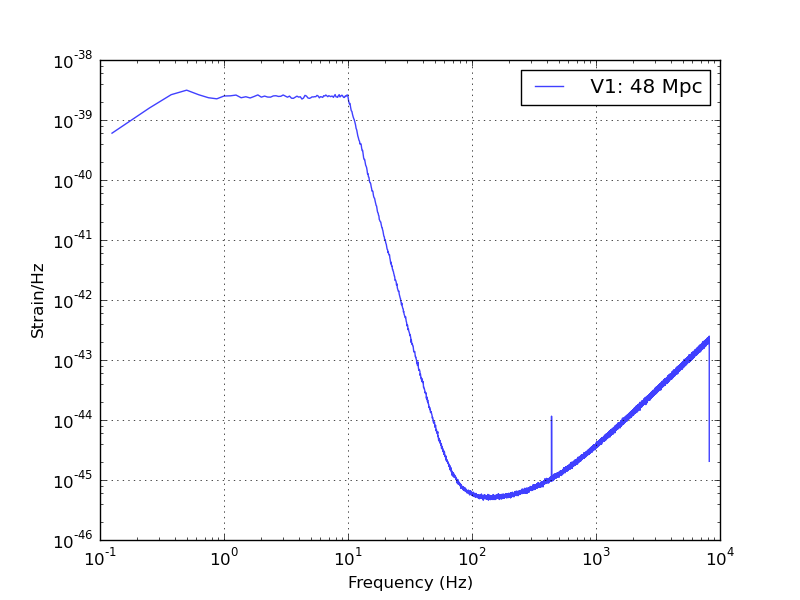Tutorial: Generation of simulated data¶
Introduction¶
GstLAL provides several tools for producing fake gravitational wave data for the purpose of simulating various scenarios. This page works through several examples starting with simple command line data generation, working up to Condor DAGs that can generate months of fake data suitable for MDC studies.
Basic LIGO/ALIGO colored Gaussian noise on the command line¶
Consult gstlal_fake_frames for more details
The basic steps to generate and validate LIGO colored noise are:
Use
gstlal_fake_framesto make the dataVerify that the PSD is as you would expect with
gstlal_reference_psdPlot the resulting PSD with
gstlal_plot_psd
An example PSD plot:

Custom colored noise, i.e. simulate your own detector¶
Consult gstlal_fake_frames for more details
Start by obtaining a reference PSD that you wish to have as the target for recoloring. If you actually have a text file ASD such as this one: e.g. here, then you will need to first use
gstlal_psd_xml_from_asd_txtto convert itNext use
gstlal_fake_framesto make the data with the desired PSDRepeat the same validation steps as above to obtain, e.g.:

Recolored noise¶
Consult gstlal_fake_frames for more details
This procedure assumes you are on an LDG cluster which has the data you wish to recolor. Note that some of the tools required on not gstlal based. Please consult the documentation for the external tools should you have questions.
First obtain segments for the data using
ligolw_query_gwosc_segmentsThen create the PSD you wish to recolor to (perhaps using
gstlal_psd_xml_from_asd_txt)compute a reference spectrum from the strain data that you wish to recolor using
gstlal_reference_psdYou might choose to optionally “smooth” the reference spectrum in order to leave lines in the underlying data. You can try using
gstlal_psd_polyfitNow with segments, a PSD (possibly smoothed) measured from the strain data, and a PSD that is the target for the recolored spectrum, you are free to use
gstlal_fake_framesaccording to the documentation.
Recoloring existing data with a HTCondor dag¶
Some of the steps required to automate the batch processing of recoloring a large data set has been automated in a script that generates a condor DAG. The input to the condor dag script has itself been automated in makefiles such as this.
As an example try this:
$ wget https://git.ligo.org/lscsoft/gstlal/raw/master/gstlal/share/Makefile.2015recolored
$ wget https://git.ligo.org/lscsoft/gstlal/raw/master/gstlal/share/recolored_config.yml
$ make -f Makefile.2015recolored
$ condor_submit_dag fake_frames_dag.dag
You can monitor the dag progress with:
$ tail -f fake_frames_dag.dag.dagman.out
You should have a /frames directory that contains the recolored frame data. Experiment
with changing parameters in the Makefile to generate different PSDs, create frames over different stretches
of data, etc.